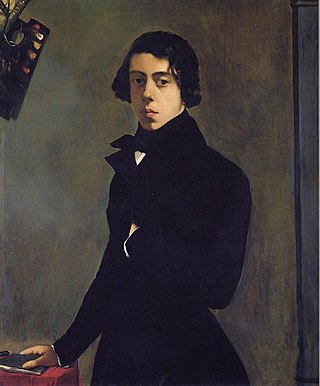
Théodore Chassériau was a Dominican-born French Romantic painter noted for his portraits, historical and religious paintings, allegorical murals, and Orientalist images inspired by his travels to Algeria. Early in his career he painted in a Neoclassical style close to that of his teacher Jean-Auguste-Dominique Ingres, but in his later works he was strongly influenced by the Romantic style of Eugène Delacroix. He was a prolific draftsman, and made a suite of prints to illustrate Shakespeare's Othello. The portrait he painted at the age of 15 of Prosper Marilhat makes Chassériau the youngest painter exhibited at the Louvre museum.

Henri-Jean Guillaume "Henri" Martin was a French painter. Elected to the Académie des Beaux-Arts in 1917, he has been described as a prolific master whose work has touches of melancholy, dreaminess and mystery.

Antoine-Augustin Préault was a French sculptor of the "Romantic" movement. Born in the Marais district of Paris, he was better known during his lifetime as Auguste Préault.

Étienne-Jules Ramey, called Ramey fils, was a French sculptor.

Eugène-Louis Lequesne was a French sculptor. Lequesne was born and died in Paris. In 1841, he entered the École nationale des beaux-arts, in James Pradier's workshop. In 1843, he won the second Prix de Rome, and in 1844 the first prize, with a plaster bas-relief entitled Pyrrhus tuant Priam. He lived at the Académie de France à Rome from 1844 to 1849, alongside Jean-Louis Charles Garnier. In 1855, he was awarded the Great Prize for sculpture at the Exposition Universelle, and received the Légion d'honneur.
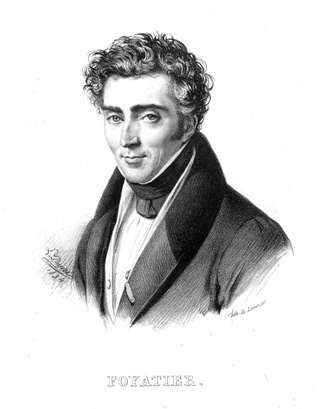
Denis Foyatier was a French sculptor in the neoclassical style.

Baron Charles Frédéric Chassériau du Chiron was a Saint Dominican architect and painter, who served as chief architect of the cities of Marseille, Algiers, in Algeria; and Cairo, in Egypt. He is particularly known for having designed the seafront of the city of Algiers.

Louis Antoine Léon Riesener was a French Romantic painter.

Marcel-André Baschet was a French portrait painter, notable for his numerous portraits of the Presidents of the French Third Republic.

The Musée des Beaux-Arts d'Arras is located in the old Abbey of St. Vaast in Arras, in the Nord-Pas-de-Calais, France.
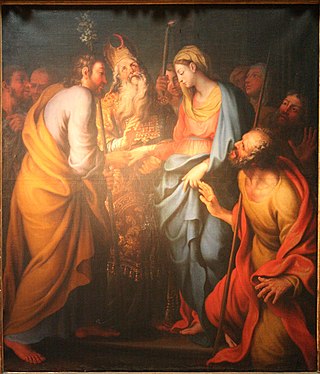
Barthélemy Chasse (1659-1720) was an Italian-born French painter.
Michel Serre (1658–1733) was a Catalan-born French painter.
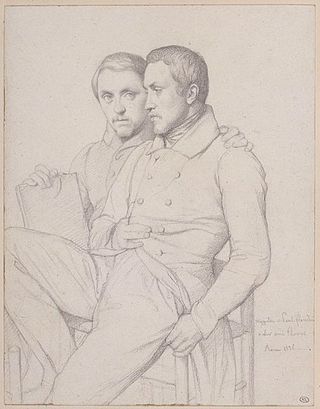
Paul Jean Flandrin was a French painter. He was the younger brother of the painters Auguste Flandrin and Hippolyte Flandrin.

Jean-Édouard Dargent, known as Yan' Dargent and in his later years Yann Dargent, was born in Saint-Servais on 15 October 1824 and died in Paris on 19 November 1899. He was a French painter and illustrator. Most of his paintings depicted Brittany.
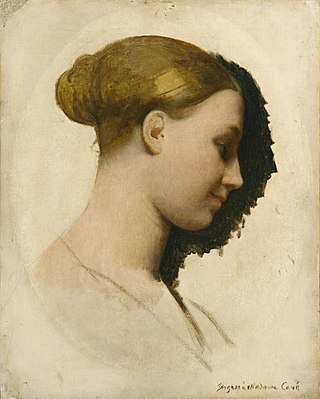
Madame Cavé was a French painter and drawing professor. Born Marie-Élisabeth Blavot and also known as Marie Monchablon in her youth, she married the painter Clément Boulanger and then, after Boulanger's death, Edmond Cavé—whom she also outlived.

Louis Jules César "Louis-Jules" Bouchot was a 19th-century French architect responsible in particular for the construction of the Nice and Milan railway stations.

Atelier de la rue Furstenberg is an 1866 oil-on-canvas painting by the 19th century French impressionist artist Frédéric Bazille, which has been in the collection of the Musée Fabre in Montpellier, France since 1985.

Gustave Lassalle-Bordes was a French painter in the Romantic style, known primarily for historical scenes.

Eugène Goyet, was a French artist. Beginning in 1827 his work was regularly selected for exhibition in the annual Paris Salon. He achieved his greatest success as a painter of religious subjects, with his paintings of Christ and various saints installed in churches and public buildings across France. A successful portrait painter, his most prestigious commission was his 1847 portrait of Pope Pius IX. He was the son of self-taught artist Jean-Baptiste Goyet, and husband of the pastel portrait artist Zoé Goyet.






















